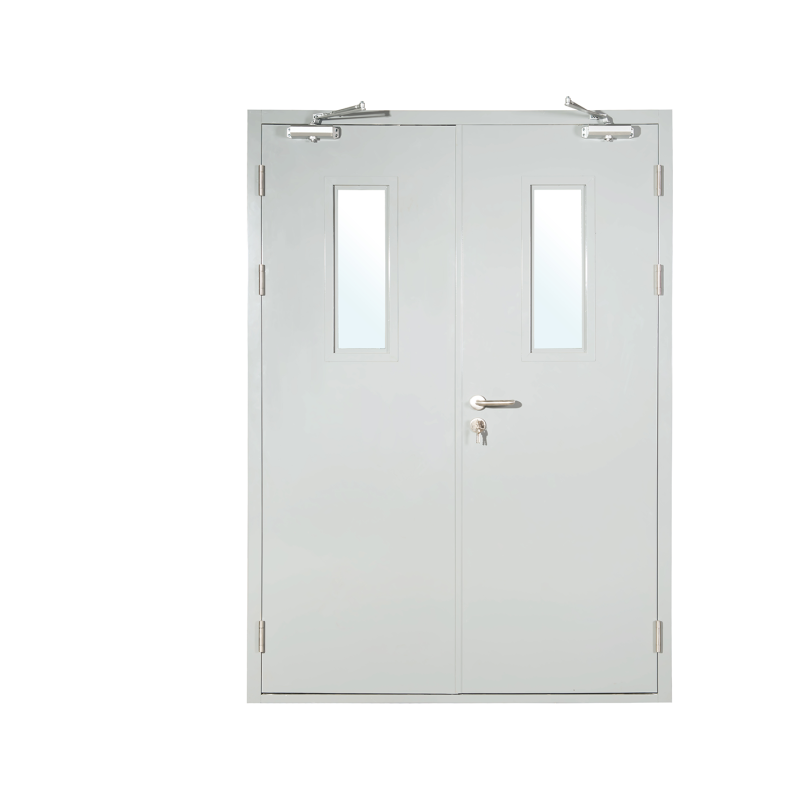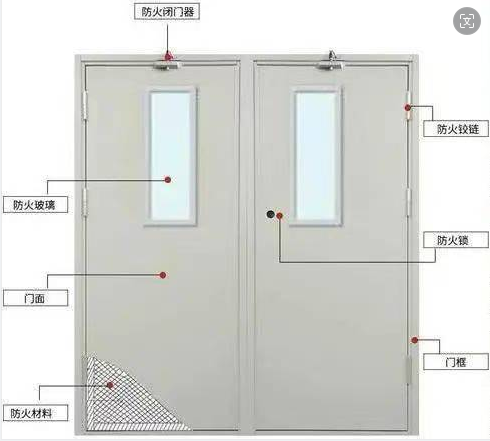
Fire Exit Door and Emergency Exit Door Standards: Ensuring Safety in Fire Emergencies.Fire exit doors and emergency exit doors play a critical role in maintaining building safety during fire emergencies. These doors are designed to provide a clear and safe path for evacuation, and their installation must meet strict standards to ensure functionality. In this article, we will explore the setup requirements for fire emergency passages, fire door regulations, and the relationship between emergency exit doors and fire safety corridors.
Fire Emergency Passage Setup Requirements
Passage Width and Height
- Width: The width of a fire emergency passage should not be less than 4 meters to allow easy access for fire trucks and personnel. For high-rise buildings, the width should be increased appropriately to accommodate more equipment.
- Height: The passage height should be no less than 4 meters to ensure that all necessary fire-fighting vehicles and equipment can pass through without obstruction.
Restrictions on Obstacles in the Passage
- No Obstruction: Fire emergency passages must remain clear of any debris or materials that could block the path, ensuring that emergency personnel and vehicles can move freely.
- Vehicle Parking Limitations: Vehicles should not be parked within fire exit corridors or emergency lanes to prevent interference with fire truck access during emergencies.
Passage Signage and Lighting
- Clear Signage: It is crucial to install visible signs at the entrance, exit, and turns of the fire exit door pathways. These signs must clearly indicate that it is a fire exit route, ensuring easy recognition by building occupants during emergencies.
- Adequate Lighting: Proper lighting must be installed along emergency exit doors and fire escape routes. In emergency situations, this allows people to quickly and safely locate exits, even if the power is compromised.
Requirements for Fire Exit Doors and Emergency Exit Doors

Number of Emergency Exit Doors
The number of emergency exit doors required in a building depends on its size and height. Larger and taller buildings must have more exits to ensure that occupants can evacuate quickly and safely during a fire. The proper placement of fire exit doors ensures there are multiple routes for escape.
Distance Between Emergency Exit Doors
The distance between emergency exit doors should be carefully considered. Exits should neither be too far apart nor too close together, ensuring that occupants can easily reach a safe area from any point in the building.Fire Exit Door and Emergency Exit Door Standards.
Marking of Emergency Exits
At each emergency exit door, clear signs labeled “Exit” must be installed. These doors should also be equipped with emergency lighting, ensuring visibility in low-light or smoke-filled environments. The presence of these signs and lights is essential for guiding people safely out of the building during a fire.
Fire Rating and Material Selection for Fire Exit Doors
Fire Rating
Fire exit doors must meet specific fire ratings based on the fire resistance limits and fire safety codes applicable to the building. These doors are typically classified into categories such as Class A, B, or C depending on their resistance to fire and heat.
Material Selection
When selecting the materials for fire exit doors, it is essential to use non-combustible or fire-retardant materials. Popular options include steel and fire-treated wood, which are both effective at withstanding high temperatures.
The Role of Fire Doors in Fire Escape Routes
Fire Resistance Ensures Safety in Passageways
Fire exit doors are designed with a specific fire resistance time, ensuring they can remain intact during a fire for a certain period. This feature provides crucial time for occupants to evacuate safely, making the passageways secure and functional.
Heat Insulation Reduces Passage Temperature
One of the key features of fire exit doors is their excellent heat insulation properties. These doors slow down the transfer of heat, helping to reduce the temperature in fire escape routes and preventing smoke and heat from overwhelming the escapees.
Synergy Between Fire Exit Doors and Escape Routes
Ensuring Safe Evacuation
The combination of well-planned emergency exit doors and fire escape routes creates a safe evacuation pathway during a fire. Properly installed fire doors contribute to minimizing casualties by allowing occupants to evacuate efficiently.
Preventing Fire Spread
In addition to evacuation safety, fire exit doors play a significant role in preventing the spread of fire. They maintain their structural integrity for a set time during a fire, effectively stopping flames from moving through doorways and into adjacent areas.
Enhancing Firefighting and Rescue Efficiency
The presence of clear and unobstructed fire escape routes and functional fire exit doors ensures that firefighters can quickly access the site of the fire. This improves the efficiency of fire suppression and rescue operations, ultimately reducing damage and saving lives.
Case Study Analysis and Lessons Learned
Successful Case Studies
Case 1: High-rise Office Building – Fire Exit Door and Escape Route Design
In this example, a high-rise office building followed proper safety regulations regarding the width of its fire escape routes and the fire resistance time of its fire exit doors. During an actual fire, the passageways were unobstructed, and the fire doors successfully prevented the spread of the flames, allowing for timely evacuation and rescue operations.
Case 2: Large Commercial Complex – Emergency Exit Door Setup
A large commercial complex, known for high foot traffic and increased fire risks, had carefully planned its emergency exit doors and fire escape routes. By incorporating multiple fire exit doors, strategically placing safety exits, and using high-performance fire doors, the complex successfully managed several fire incidents, safeguarding lives.Fire Exit Door and Emergency Exit Door Standards.
Problematic Case Studies
Case 1: Residential Community – Blocked Fire Escape Routes
In this case, a residential community had its fire escape routes obstructed by personal items and debris, significantly narrowing the passageways. During a fire, this blockage prevented fire trucks from entering the community, delaying rescue efforts and leading to tragic losses of life and property.
Case 2: Factory – Damaged Fire Exit Doors
A factory failed to maintain its fire exit doors, leading to severe damage over time. When a fire broke out, the doors could not close properly, allowing the fire to spread rapidly and causing significant financial and material losses.Fire Exit Door and Emergency Exit Door Standards.
Lessons Learned
The importance of fire exit doors and escape routes cannot be overstated. They are crucial components of fire prevention and must be installed and maintained according to regulatory standards. Occupying or blocking fire passages or damaging fire doors can have dire consequences and legal implications.
To prevent such issues, regular maintenance of emergency exit doors and fire safety routes is essential. Furthermore, public awareness of fire safety and self-rescue must be enhanced to ensure proper use of these critical fire protection systems.
Future Trends and Challenges
Technological Innovation in Fire Safety
New Material Applications
With advancements in material science, new fire-resistant and insulating materials are being developed. These innovations provide greater fire resistance and safety, extending the protection offered by fire exit doors and escape routes.
Smart Technology
The integration of IoT and big data technologies will lead to the development of intelligent monitoring and management systems for fire exit doors and emergency escape routes. These systems will offer real-time alerts and improved emergency response capabilities.
Rescue Technologies for Complex Scenarios
For high-rise buildings and other complex environments, new evacuation and rescue technologies, such as controlled descent devices and emergency evacuation routes, are being developed to improve evacuation efficiency during fires.
Regulatory and Market Challenges
Evolving Regulations
As fire safety regulations continue to evolve, the standards for fire exit doors and escape routes will become more stringent. Companies must stay updated with regulatory changes to ensure that their products meet the required safety standards.
Enhanced Oversight
Government oversight of fire safety measures is becoming stricter. Companies involved in the production and installation of fire exit doors will face more rigorous inspections and compliance checks.
Rising Market Standards
With the growing awareness of fire safety, the demand for high-quality, high-performance fire exit doors is increasing. Companies need to raise their product quality and technical capabilities to meet the evolving demands of the market.
